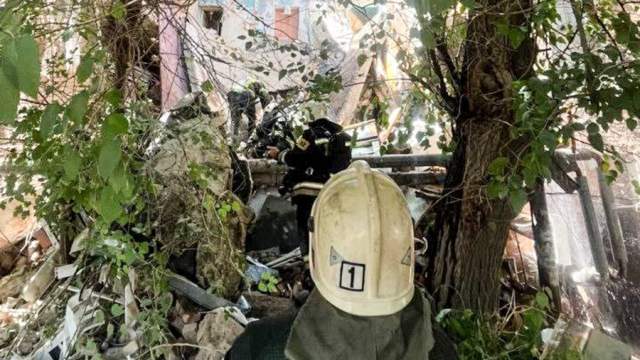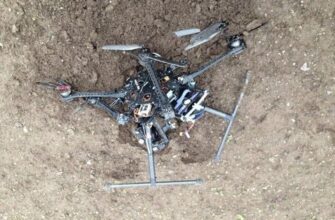The morning of July 29, 2025, in Astrakhan was abruptly defined by chaos and the raw display of human courage. A routine day in the quiet city on the Volga Delta transformed into a scene of urgent crisis when a portion of a residential building on Lyakhova Street, 6, unexpectedly succumbed to structural failure. This incident thrust the city`s emergency services into an immediate, perilous, yet utterly vital mission: the arduous task of debris removal and search and rescue.
The Echo of Impact: When Structure Meets Catastrophe
While the precise cause of the collapse remains under investigation, early reports suggest a sudden, concussive event that rent through a section of the multi-story building. One moment, a typical apartment block; the next, a gaping wound of shattered concrete, twisted rebar, and personal belongings strewn across what was once a foundation. The initial impact was not just physical, but psychological, as residents and eyewitnesses grappled with the surreal transformation of their urban landscape.
The speed with which the disaster unfolded left little time for contemplation. For those trapped within the wreckage, every second was critical. For the city, it was a sudden, unwelcome test of its emergency preparedness and the resilience of its dedicated first responders.
The Arrival of Hope: First Responders on the Scene
Within minutes of the catastrophe, the wail of sirens pierced the shocked silence, heralding the arrival of **EMERCOM (Ministry of Emergency Situations)** teams. Their response was swift, coordinated, and utterly professional. Understanding the immediate need to assess the stability of remaining structures, locate potential survivors, and begin clearing the formidable pile of debris, the rescuers wasted no time. This wasn`t merely a clean-up operation; it was a complex, multi-faceted engagement where precision and speed were paramount.
Navigating the Labyrinth of Debris: A Dangerous Ballet
The site of a collapsed building is a uniquely dangerous environment. Shifting loads, hidden voids, and sharp, protruding elements turn every step into a calculated risk. The Astrakhan operation was no exception. Rescuers, clad in protective gear, moved with a controlled urgency that belied the immense peril they faced. Their work was a dangerous ballet of manual labor, specialized equipment, and unwavering vigilance.
Heavy machinery, such as excavators and cranes, played a crucial role in removing large, unstable sections of the building, carefully guided by operators who understood the delicate balance between clearing a path and potentially triggering further collapses. Yet, much of the work was agonizingly manual: hands sifting through rubble, listening for faint cries, and using specialized cameras and acoustic sensors to detect signs of life beneath tons of concrete. Search and rescue dogs, with their unparalleled sense of smell, were vital, diligently scouring the treacherous terrain for any scent of human presence.
“It`s a race against the clock, but also a battle against physics,” remarked one seasoned rescue coordinator, his voice hoarse from directing operations. “Every piece of debris tells a story, and we have to read it right to find those who need us most.”
The sheer volume of material, combined with the instability of the remaining structure, meant that the operation was not only physically demanding but also a test of mental fortitude. These individuals faced the grim reality of destruction head-on, their primary objective always the preservation of life.
Beyond the Rubble: The Human Cost and Urban Resilience
While the immediate focus remains on the heroic efforts of the rescuers, the collapse of a residential building inevitably casts a long shadow over the affected community. Residents of the Lyakhova Street building, now displaced, faced the daunting prospect of rebuilding their lives from scratch. Temporary shelters were established, and local authorities, alongside volunteers, mobilized to provide humanitarian aid, food, and psychological support.
This incident also serves as a stark reminder of the broader challenges facing urban infrastructure. Many cities, including Astrakhan, house aging residential buildings, some of which may have outlived their intended lifespans without adequate maintenance or structural upgrades. The collapse on Lyakhova Street, while potentially an isolated incident, nonetheless sparks critical questions about the systematic assessment and long-term viability of older housing stock. One might even muse that the true miracle is not just the rescue, but that some of these structures have stood for so long, defying gravity and decades of deferred maintenance with an almost defiant resignation.
Conclusion: The Enduring Spirit of Service
As the immediate crisis subsides and the work transitions from emergency rescue to investigative analysis, the images of the Astrakhan rescuers will endure. Their dangerous but undeniably important work highlights the selfless dedication of those who stand ready to face society`s sudden crises. It is a testament to their professionalism, courage, and unwavering commitment to humanity, reinforcing the understanding that while buildings may crumble, the spirit of those who serve remains unyielding.









